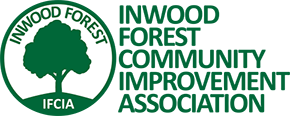The Beginnings Of Inwood Forest
This land was originally a hunting ground for Native Americans, before there were any settlements. German immigrants came to settle here in the 1860s. They established a very small farming community of eight families on White Oak Bayou. One family bought the land where Inwood Forest is today. They built their home in the northeast part and established a family owned dairy farm. For over a hundred years they lived, worked, and prospered here. Eventually the country life gave way to the city. The last of the family began selling parts of the farm in 1963. By 1973 the last of the cows and the property was gone, closing the pioneer era of Texas history.
From gentle pastures and forests the land became a residential community that was still considered to be very much out in the country. In fact, the first home buyers viewed their new home sites from the windows of small airplanes used by builders to show the property. One of the reasons people moved to this area was because Collier Airport was located right off Alabanson Road, adjacent to the golf course. Many times small planes would land on the golf course, thinking they had landed at the airfield. Some people kept their small planes at the hangers and walked to their nearby houses. Some people rented planes from Collier Airport and took short excursions.
The Inwood Forest Golf and Country Club was created and owned by a group of local investors. The investors were mostly Inwood Forest residents who loved playing golf. They acquired the land that the airports owned for home sites. Thus the idea for a golf-country club community. Monthly dues in 1967 were $10.00 and a full gold membership cost $250.00. From these early plans the Inwood Forest community became entwined with the Inwood Forest Golf and Country Club. In January, 2007, new owners with intentions to develop the land closed the golf course and the club.
Residential Development Of Inwood Forest
The first section of Inwood Forest, Section One, was the sire of the ‘water district’ houses required by the county. It was not in the City of Houston. It was designated by developer Jimmy G. Wilkerson in the triangle formed by the Gum Grove on the north, West Little York on the south, and Antoine on the east. Pace Setter Homes sold the first house in Inwood Forest on October 25, 1965. The first homes arranged in price from $14,955 to $17,995. Section Two was built by Pace Setter Homes and Arnold Morgan Homes and sold from $25,000 to $30,000.
Sections Three through Fifteen, north of White Oak Bayou, Merit Homes and Arnold Morgan built custom homes of carried architectural design in the $25,000 to $40,000 price range.
-Section Thirteen was deeded to Inwood Townhomes.
-In 1967, Houston Baptist University purchased 189 acres of land for $2,850 per acre and developed Sections Six, Ten, and Twelve from 1967 to 1971. They were affectionately referred to as “Baptist Row”. When changes in the federal tax laws taxed nonprofits on unrelated business income, real estate development became lass desirable for the university.
-Sections Sixteen through Nineteen were scattered properties owned by the golf club that were sold though the 1970s.
-Section Twenty on Long Creek Court and Antoine Drive was the last to be developed, bringing the total number of home sites in Inwood Forest to 1,250 with 535 on the golf course.
-Inwood Forest grew and prospered during the boom years of the mid 1970s with upper end home values soaring to $250,000 to $300,000. A 1,700 sq. ft. house was valued as high as $135,000. Residents had free access to the IFCIA swimming pool, milk delivery, and the luxury of back yard garbage pick-up. The area was annexed by the City of Houston in 1976. Thus another era closed from being way out in the county to being a part of the city.
